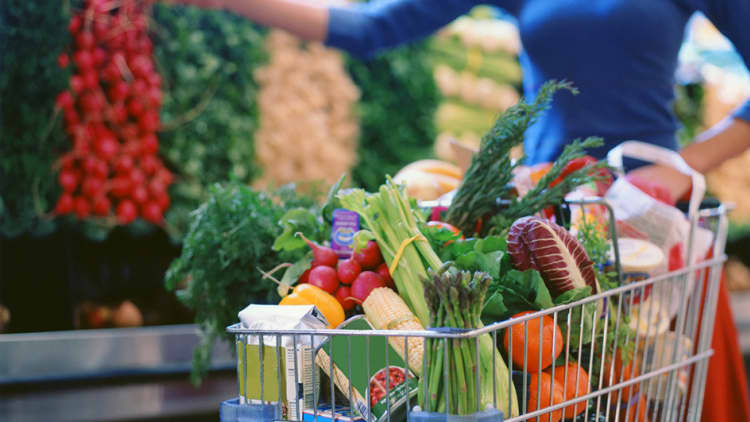This story is part of CNBC Make It's One-Minute Money Hacks series, which provides easy, straightforward tips and tricks to help you understand your finances and take control of your money.
The typical American family spends about $387 a month, or about $4,643 a year, on groceries, according to the latest analysis from the U.S. Bureau of Labor Statistics.
Despite being one of the biggest monthly expenses for most Americans, there are simple ways to trim these costs.
One of the easiest ways to save money on groceries may seem obvious, but it works: Wait to shop until after you eat.
Research seems to indicate that if you go to the grocery store hungry, you're more likely to buy more. That's because your brain is telling you "I want" and so many people tend to purchase more items.
Hungrier shoppers may spend as much as 64% more on purchases, including non-food items, than those who go to the store on a full stomach, according to a report published in 2015 by a team of researchers from the University of Minnesota and the University of Southern California.
But even if you don't have time to eat before you head to the grocery store, don't worry. You can still ensure you're not overspending by making a list before you go.
Figure out ahead of time what meals you want to make and eat, then create a shopping list based on the ingredients you'll need to buy. And make sure to double check your pantry and freezer to ensure you don't already have those items before you add them to your list.
There are several helpful apps that can help you develop a list. The Cozi Family Organizer app can automatically generate a shopping list based on recipes you add through its shared shopping list function. And Our Groceries syncs with smart devices to make it easier to add items to your list as you run out.
In addition to creating a list, you may also find it easier to shop online for your groceries. Although online grocery shopping can be more expensive, it can make it easier to avoid adding impulse buys to your cart like you might while shopping in-person. If you select a pick-up option, you may also be able to avoid paying extra delivery fees.
Keep in mind that some online grocery services do add markups to their online selections, so make sure you still take the time to compare prices and shop deals.
At the end of the day, there's only so much you can do to cut food costs, but keeping simple, easy solutions for how to shop top of mind may shave a few bucks off your next receipt.
Check out: Meet the middle-aged millennial: Homeowner, debt-burdened and turning 40
More from this series:




